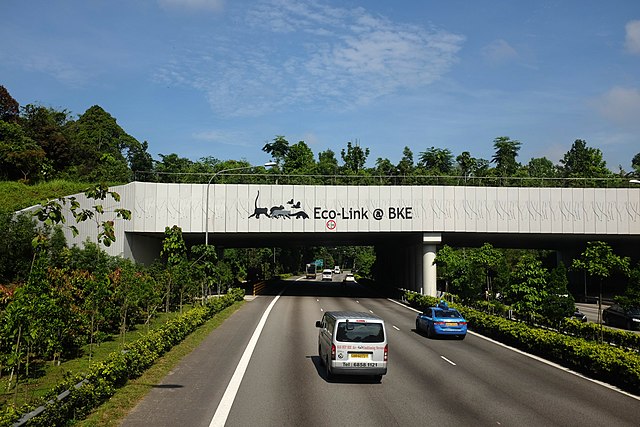Opinion | Bridges for animals may sound ridiculous, but they save money and lives
June 9, 2021
I’ll brake for wildlife, perhaps to a fault. I have a proud record of — to my knowledge — never hitting an animal with my car, though deer seem especially determined to change this as of late.
Between my baseline concern for animals and the absolute minefield of fauna that Western Pennsylvania roads become this time of year, I had an epiphany — what if we just made bridges for deer?
It turns out, I’m hardly the first person to stumble upon the concept of wildlife bridges. This idea may sound like tree-hugging nonsense. I mean, what’s next — ceding our beloved bike lanes to raccoons? But it’s not some environmentalist fantasy.
Thousands of wildlife crossings exist in the U.S. today, including overpasses, underpasses and tunnels. Their effectiveness at preventing wildlife-vehicle collisions is outstanding — a series of projects in Wyoming reduced these accidents by 90%. And do not be fooled into thinking these are a frivolous investment.
Roadkill, besides being a disgusting sight, is the ultimate waste of animal life. When an animal is struck and killed by a vehicle, it is the direct result of human development, yet it’s also an active detriment to the driver. Not only do wildlife-vehicle collisions cost around $8 billion annually, they also injure approximately 26,000 drivers and kill 200 more. Wildlife-vehicle collisions are especially prevalent in Pennsylvania, which frequently tops the list measuring the likelihood of hitting a deer. This isn’t simply some lofty animal rights issue, it’s a public safety one.
It might be difficult to picture what a wildlife crossing looks like. Luckily, it doesn’t require much imagination. These structures are usually tacked onto existing roadwork and are often little more than inconspicuous overpasses. They tend to be fenced in and layered with native plants, though far more barren arrangements seem to be working as well.
Underpasses and tunnels are also built for more skittish creatures, like squirrels, rabbits and raccoons. Even some larger creatures, such as female black bears, prefer less open structures. More low-key crossings also benefit amphibians and reptiles, who are flattened by vehicles in untold numbers.
Underpasses only cost a few hundred thousands dollars to build, while overpasses tend to stay within the single-digit millions. It’s easy to balk at these costs, but they’re trivial compared to the $8 billion in damages and, of course, the hundreds of human and the countless animal deaths caused by wildlife-vehicle collisions.
The barriers created by roadways and particularly busy highways harm animals in ways beyond the collisions themselves. Habitats have been fractured by America’s sprawling web of highways, disrupting migration, limiting genetic diversity and accelerating population declines in many species.
Take, for example, California’s mountain lions, which will inbreed themselves to local extinction in 50 years without intervention. Financial incentives aside, it would be outright cruel to not assist them with crossing points. We know that wildlife crossings work. For animals like these, their fate is in our hands. Thankfully, though somewhat shamefully since the fundraising burden has fallen on private citizens, $18 million has been pooled to build a crossing over Los Angeles’ 101 Freeway for the benefit of mountain lions and many other native creatures.
Progress is also in a relatively early stage here, despite the commonality of these accidents in Pennsylvania. The state has one of the highest likelihoods of hitting a deer — there’s a 1 in 52 annual chance of colliding with one on Pennsylvania’s roadways. Yet, only a small handful of wildlife corridors exist in the state. Carbon and Chester County, both in eastern Pennsylvania, have implemented these in some form or another.
Many are hoping to grow this paltry number of crossings. State Rep. Mary Jo Daley, D-148, has introduced a resolution calling for the Legislative and Budget Committee to conduct a study on the feasibility of wildlife corridors throughout the state.
Wildlife-vehicle collisions injure drivers and cost Americans billions each year. Wildlife crossings are a relatively inexpensive, proven solution to this problem, and it doesn’t hurt that they produce some pretty cool footage. But if you can’t support this for the sake of yourself and your wallet, at least do it for the animals. It’s a modicum of decency for the creatures that were here long, long before we were.
Jack Troy writes about politics, SGB and being tired of capitalism. Write to him at [email protected].








